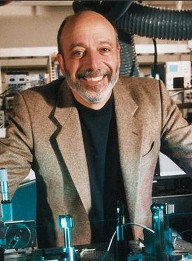- unknown (b.)
Bio/Description
An American computer scientist and solid state physicist, in his 28 years with IBM, he was a champion for translating technology-based research into marketplace opportunities. He was Senior Vice President of the IBM Corporation and Executive Director of Research. In this job, he directed IBM?s worldwide Research program with 3,200 technical employees in eight sites in five countries around the world, and helped guide IBM?s overall technical strategy. Under his leadership, IBM Research produced an unmatched string of technological breakthroughs, including the chess-playing supercomputer Deep Blue, the world's first copper chip, the giant magneto-resistive head (GMR), strained silicon (a discovery that allows chips to run up to 35 percent faster), and BlueGene, the world?s fastest supercomputer that brought computing leadership back to the United States. In addition, he has made contributions to pervasive computing, pioneered the use of copper and self-assembly in chip manufacturing, and helped manage the development of deep computing, an important tool that provides business decision makers with the ability to analyze and develop solutions to very complex and difficult problems. Also known as Ubiquitous computing, pervasive computing is a concept in software engineering and computer science where computing is made to appear everywhere and anywhere. In contrast to desktop computing, ubiquitous computing can occur using any device, in any location, and in any format. A user interacts with the computer, which can exist in many different forms, including laptop computers, tablets and terminals in everyday objects such as a fridge or a pair of glasses. While at IBM, he also initiated the project to develop Watson, the computer that competed successfully in the quiz show Jeopardy!. He graduated from Clarkson College of Technology and received his Doctoral degree in Physics from the University of Rochester in 1973. Prior to joining IBM in 1979, he was a professor of Physics in the James Franck Institute and the Physics Department at the University of Chicago. In 2009, he was appointed as the Senior Vice Provost for Research and Senior Vice Dean for Strategic Initiatives and Entrepreneurship, Polytechnic School of Engineering, responsible for providing University-wide leadership in advancing research at New York University (NYU), coordinating research among various schools of the University, and shaping the strategic planning for the University's research enterprise. He has received numerous awards, including the 1988 Bertram Eugene Warren Award from the American Crystallographic Association, the 2000 Distinguished Leadership award from the New York Hall of Science, the Hutchison Medal from the University of Rochester in 2002, and the 2002 Pake Prize from the American Physical Society. In 2003, he was named as one of the top computing business leaders in the US by Scientific American magazine. In 2005, he was the recipient of the Industrial Research Institute (IRI) Medal in honor of his contributions to technology leadership. He is a Fellow of the American Physical Society and was an Alfred P. Sloan Research Fellow from 1974-1978. He is also a member of numerous professional committees including the GAO (General Accountability Office) Board of Advisors, the Board of Trustees of the Committee for Economic Development, and the Board of the Polytechnic School of Engineering.
-
Noted For:
Pioneer in the use of copper and self-assembly in chip manufacturing and contributor to pervasive computing -
Category of Achievement:
-
More Info:


